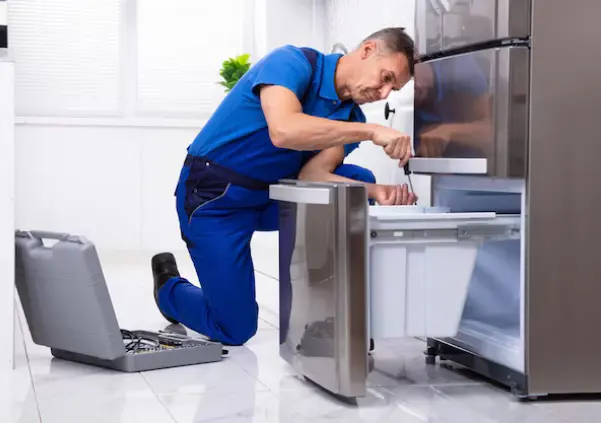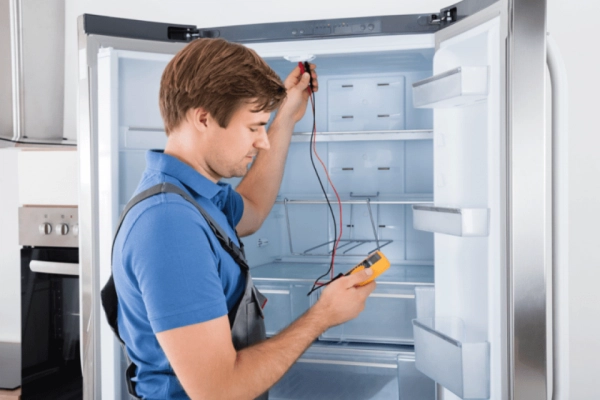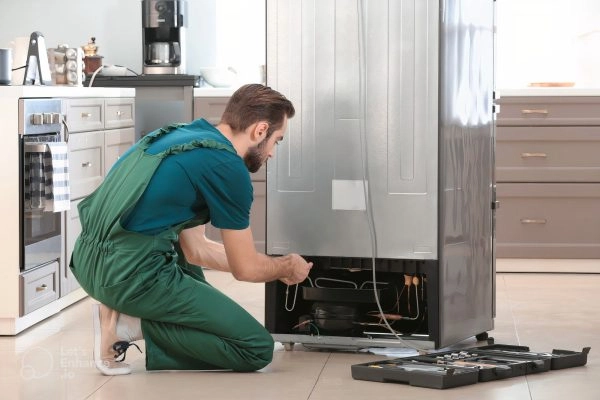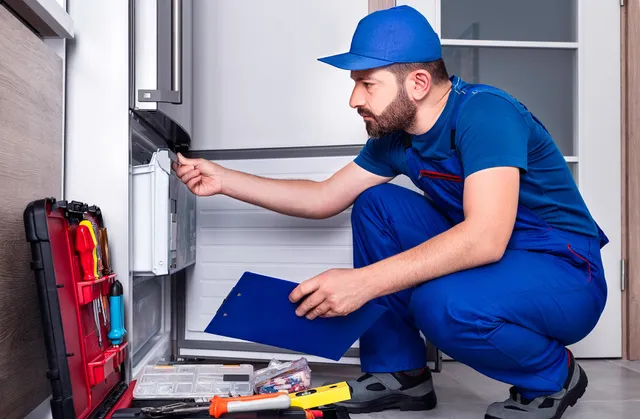Why Is My Freezer Not Freezing? Causes and Fixes

A freezer that fails to maintain cold temperature can quickly turn from an inconvenience to a costly emergency as frozen food thaws and ice cream softens. For many homeowners, discovering that their faithful freezer is no longer freezing properly triggers immediate concern about food safety and potential appliance replacement costs. Whether you’re dealing with an upright freezer, chest freezers, or the freezer compartment of your refrigerator, temperature fluctuations can stem from numerous causes—some simple to fix and others requiring professional intervention. Understanding the common reasons behind freezer malfunctions can help you determine whether a quick DIY solution is possible or if it’s time to schedule service with freezer repair technicians. This comprehensive guide explores the most frequent causes of freezer issues and provides practical solutions to restore proper freezer performance.
Common Causes of Freezer Not Freezing
Temperature Setting and Control Problems
Often, the simplest explanation for a freezer not maintaining optimal temperature involves control settings:
- Incorrect Temperature Settings: Check if someone accidentally adjusted your freezer temperature to a warmer setting. Modern freezers typically operate best between 0°F and -5°F (-18°C to -21°C) for proper food storage.
- Faulty Thermostat: The built-in thermostat controls when the cooling system activates. If it’s broken, your freezer may not reach the correct temperature despite being set properly. Signs of a faulty thermostat include frequent cycling or failure to cycle at all.
- Bad Thermistor: Many freezers use a thermistor to monitor internal freezer temperatures. When functioning normally, this thermistor signal tells the electronic control board when to activate cooling. A bad thermistor can cause temperature regulation problems.
- Electronic Control Board Issues: In newer models, the control board manages multiple freezer functions. Problems with this component can prevent proper cooling cycles even when other parts are working correctly.

DIY Fix: Try adjusting your temperature to the coldest setting temporarily. If this resolves the issue, you can gradually adjust to a more moderate setting. If adjustment makes no difference, you may need professional repair for thermostat or control board issues.
Airflow and Circulation Problems
Proper cooling requires unimpeded airflow throughout your freezer:
- Overcrowded Freezer Contents: Packing too many frozen items into your freezer blocks air vents and prevents cold air circulation. Without adequate space around items, warm pockets can develop.
- Blocked Air Vents: Check that food packages aren’t covering the vents that distribute cold air. In many freezers, these are located along the back wall or ceiling of the freezer cabinet.
- Improper Food Arrangement: For optimal freezer performance, avoid stacking items against walls or directly on evaporator coils. Maintain proper air flow by organizing freezer shelves with space between items.
- Freezer Location Issues: Placing your freezer too close to heat-producing appliances or in direct sunlight can force the compressor to work harder. Ensure adequate space around the freezer for heat dissipation.
DIY Fix: Remove excess items, reorganize contents to improve air circulation, and ensure vents are unobstructed. Keep at least 2-3 inches of space around the freezer for proper ventilation.
Condenser System Problems
The condenser is crucial for removing heat from the freezer system:
- Dirty Condenser Coils: Perhaps the most common issue, condenser coils collect dirt, dust, and pet hair over time. DIRTY CONDENSER COILS prevent efficient heat transfer, forcing the system to work harder with less cooling effect.
- Condenser Fan Motor Failure: The condenser fan circulates air across the coils to dissipate heat. A broken condenser fan motor prevents proper cooling and can lead to system overheating.
- Condenser Coil Location: Freezers with condenser coils on the back need adequate space for airflow. Those with coils underneath require regular cleaning as they’re more susceptible to dirt build-up.
DIY Fix: Clean condenser coils using a vacuum with a brush attachment. First, unplug the appliance, locate the coils (usually on the back or underneath), and gently remove accumulated dirt. For condenser fan issues, professional repair is typically needed.
Evaporator System Issues
The evaporator is where the actual cooling happens:
- Frost Buildup on Evaporator Coils: Excessive frost buildup on evaporator coils acts as insulation, preventing efficient cooling. This often stems from problems with the defrost system.
- Bad Evaporator Fan: The evaporator fan distributes cold air throughout the freezer. A broken evaporator fan motor or damaged evaporator fan blades will prevent cold air circulation even if the system is producing cold.
- Evaporator Fan Blockage: Sometimes ice or frost can accumulate on evaporator fins or around the fan, preventing the evaporator fan from moving freely.
- Evaporator Coil Leaks: In rare cases, a refrigerant leak from the evaporator coils can prevent proper cooling. Signs include oil residue near the coils and unusual noises from the cooling system.
DIY Fix: If frost layers are visible, a manual defrost may help. Unplug the freezer, empty contents, and allow all ice to melt. Catch water in trays, and clean the interior before restarting. For fan issues or refrigerant problems, professional service is required.

Defrost System Problems
Most modern freezers feature an automatic defrost feature to prevent frost build-up:
- Faulty Defrost Heating Element: During the defrost cycle, this element melts accumulated frost. If it fails, ice builds up on the evaporator coils, reducing cooling efficiency.
- Defrost Timer or Control Issues: The system that controls defrost intervals might malfunction, preventing regular defrost cycles.
- Faulty Defrost Temperature Sensor: This component monitors when defrosting is complete. If faulty, it can cause incomplete defrosting or excessive defrost cycling.
- Clogged Defrost Drain: When frost melts during defrost cycles, water flows through the drain tube. A frozen-over defrost drain can lead to water accumulation that refreezes, causing ice buildup.
DIY Fix: Check for visible ice accumulation on internal components. If present, a manual defrost might temporarily resolve the issue, but professional diagnosis is often needed for long-term resolution.
Mechanical and Refrigerant Issues
Some freezer problems involve core mechanical components:
- Freezer Compressor Problems: The compressor is the heart of the cooling system. A broken freezer compressor or broken start relay prevents the cooling cycle from initiating.
- Refrigerant Level Issues: Too little refrigerant (due to leaks) or extra refrigerant (from improper servicing) can prevent proper cooling.
- Sealed System Leaks: Leaks in the gas refrigerant system require professional detection and repair. Signs include oil spots, hissing sounds, and gradual temperature increases.
DIY Fix: Listen for unusual noises from the compressor area. If you hear clicking, buzzing, or silence when the freezer should be running, a professional evaluation is needed. Never attempt to repair refrigerant issues yourself, as this requires specialized equipment and certification.
Electrical Supply Issues
Sometimes the problem isn’t with the freezer itself:
- Power Supply Problems: Ensure the freezer is plugged into a functioning electrical outlet. Check if it’s connected to a GFI outlet that may have tripped.
- Circuit Breaker Issues: Verify that the circuit breaker hasn’t tripped. Freezer compressors draw significant power during startup, which can occasionally trip breakers.
- Voltage Fluctuations: Inconsistent power supply can affect freezer components, particularly the compressor and control systems.
DIY Fix: Ensure the freezer is plugged into a dedicated outlet with stable power. Check circuit breakers and reset if necessary. If power issues persist, consult an electrician.
Door Seal and Insulation Problems
Problems with the freezer door can allow cold air escape:
- Worn Freezer Door Gasket: A damaged freezer door sealer allows warm air to enter and cold air to escape, making it difficult to maintain freezing temps.
- Door Alignment Issues: Misaligned freezer doors or freezer drawer tracks prevent proper sealing.
- Frequent or Prolonged Opening: Opening the freezer numerous times or for an extended amount time allows warm air to enter and cold air to escape.
DIY Fix: Check door seals by closing the door on a dollar bill or piece of paper. If you can easily pull it out when the door is closed, the seal needs replacement. Clean gaskets with mild soap and water to remove food residue that might prevent proper sealing.
Why Choose Toronto Refrigeration
When faced with freezer troubles that extend beyond simple DIY fixes, Toronto Refrigeration stands as a leader in appliance maintenance and repair throughout Ontario. Here’s why customers consistently choose our services:
Specialized Freezer Expertise: Our freezer repair technicians have decades of experience diagnosing and fixing all types of freezer issues, from minor temperature fluctuations to complete system failures. We work on all major appliances, including deep freezer units, chest freezers, and combination refrigerator-freezer appliances.
Comprehensive Diagnostic Approach: Rather than focusing on symptoms alone, our appliance professionals conduct thorough evaluations to identify root causes. This prevents recurring issues and ensures your freezer performs reliably long after repair.
Quick Response for Critical Situations: We understand that a broken freezer threatens expensive frozen food. Our service technicians offer priority scheduling for freezer repairs to prevent food loss and minimize inconvenience.
Complete Component Knowledge: From electronic control boards to evaporator fan motors, our team understands common freezer components and freezer part replacement requirements across brands. This expertise allows for accurate diagnosis and efficient repairs.

Transparent Service Experience: Before beginning any work, we provide clear explanations of freezer issues and repair options, along with upfront pricing. No surprises or hidden costs—just exceptional customer service from start to finish.
Preventive Maintenance Guidance: Beyond fixing immediate problems, our skilled service professionals provide practical advice to prevent future freezer malfunctions, including proper cleaning techniques, optimal temperature settings, and maintenance scheduling.
Long-Term Solutions: Unlike some repair services that offer temporary fixes, Toronto Refrigeration addresses underlying issues for lasting performance. Our goal is to restore your freezer to optimal condition, not just mask symptoms.
Comprehensive Service Coverage: Whether your freezer needs a simple thermostat adjustment or complex condenser system repairs, we handle all aspects of freezer maintenance and repair. From frost situation assessment to complete system overhauls, our technicians deliver consistent, high-quality results.
When comparing appliance repair options, Toronto Refrigeration’s combination of technical expertise, customer focus, and comprehensive service makes us the preferred choice for freezer repairs throughout Ontario.
Conclusion
A freezer that fails to maintain proper freezing temperature doesn’t necessarily require replacement. From simple issues like incorrect temperature settings or dirty condenser coils to more complex problems involving compressors or refrigerant systems, understanding the potential causes helps you take appropriate action. When DIY solutions prove insufficient, professional repair services can often restore your freezer’s performance at a fraction of replacement cost. By addressing problems promptly and maintaining your freezer properly—keeping coils clean, ensuring proper airflow, and monitoring for early warning signs like unusual noises or temperature fluctuations—you can extend its lifespan significantly. For Ontario residents, having a reliable appliance repair partner ensures quick resolution when freezer issues arise, protecting both your appliance investment and the frozen food it contains.